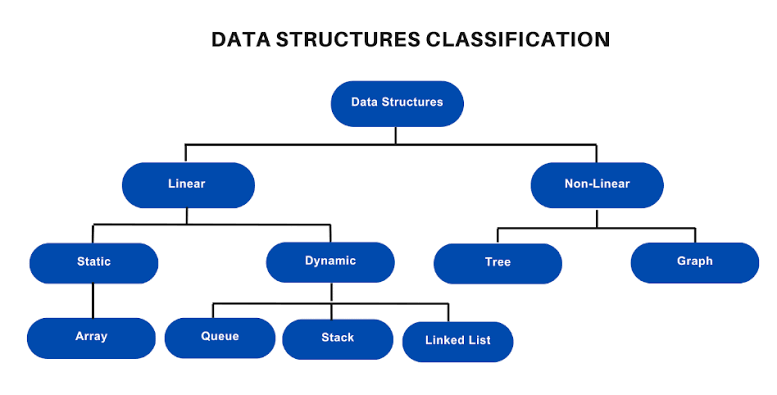
Welcome to your roadmap to mastering data structures and algorithms! Whether you're
just starting your journey or looking to deepen your understanding, this guide will help you
navigate the complex landscape of data structures and algorithms.
**1. Understanding the Basics:**
Before diving into the intricacies of data structures and algorithms, it's crucial to have a
solid foundation. Start by familiarizing yourself with basic concepts such as variables,
loops, arrays, and conditional statements. Understanding how these fundamental building blocks work will set you up for success as you delve deeper into more complex topics.
**2. Learning Data Structures:**
Data structures form the backbone of any efficient algorithm. Begin by studying linear data structures like arrays, linked lists, stacks, and queues. Once you grasp these concepts,
move on to nonlinear structures such as trees and graphs. Each data structure has its own unique properties and applications, so take the time to understand when and how to use
them effectively.
**3. Mastering Algorithms:**
With a solid understanding of data structures, it's time to explore the world of algorithms.
Start by learning about sorting and searching algorithms, including bubble sort, merge sort, quicksort, binary search, and more. Then, dive into algorithmic paradigms like divide and conquer, dynamic programming, and greedy algorithms. Understanding the strengths and weaknesses of each algorithm will help you choose the right approach for solving a given
problem.
**4. Practicing Problem-Solving:**
Theory is important, but nothing beats hands-on practice when it comes to mastering data structures and algorithms. Leverage online platforms like LeetCode, HackerRank, and
Codeforces to solve a wide range of problems across various difficulty levels. Don't be
discouraged by initial failures – every mistake is an opportunity to learn and improve.
**5. Exploring Advanced Topics:**
Once you've built a strong foundation, consider exploring more advanced topics in data
structures and algorithms. This could include topics like graph algorithms, string
algorithms, computational geometry, and more. Delving into these areas will broaden your understanding and make you a more well-rounded programmer.
**6. Applying Your Knowledge:**
Finally, don't forget to apply your newfound knowledge to real-world projects. Whether
you're building a web application, designing a database, or optimizing a piece of code, the principles of data structures and algorithms are applicable in countless scenarios. Look
for opportunities to incorporate what you've learned into your own projects and see how it
improves your efficiency and problem-solving skills.
**Conclusion:**
Mastering data structures and algorithms is a journey that requires dedication,
persistence, and a willingness to learn. By following this roadmap and embracing the challenges along the way, you'll develop the skills and expertise needed to tackle even the most complex programming problems with confidence. So, what are you waiting for? Let
the journey begin!